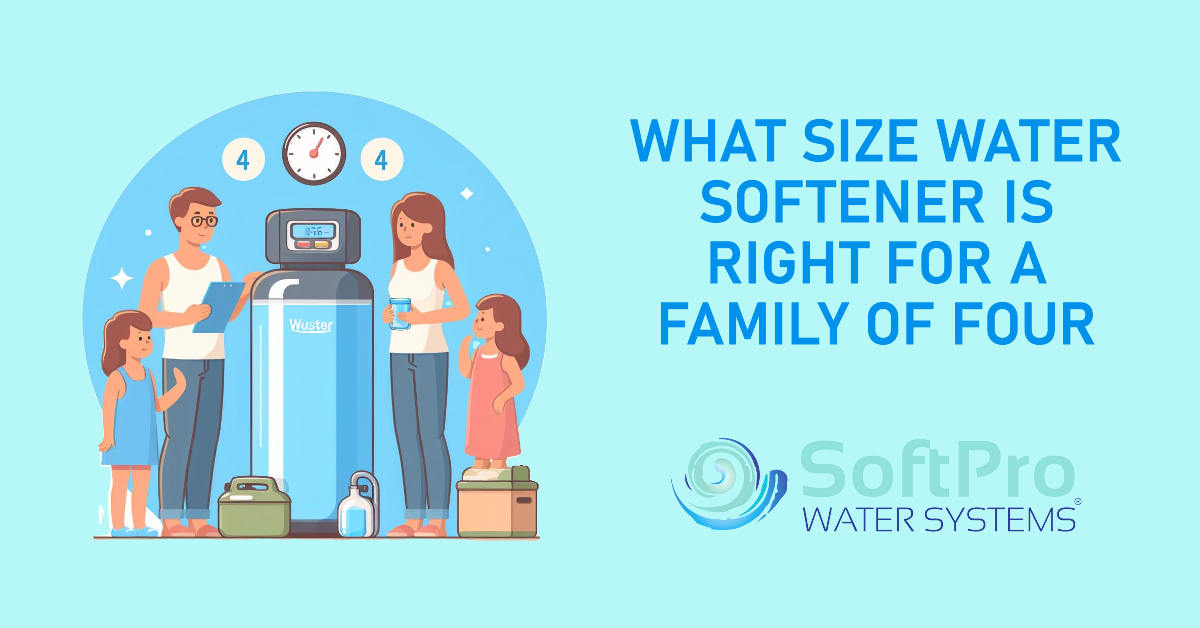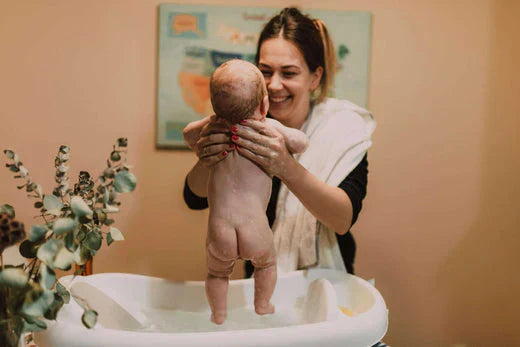How Much Does It Cost to Operate and Maintain an Ion Exchange Water Softener?
Table of Contents
Initial Purchase Costs
The average cost of an ion exchange water softener system ranges from $500 to $6,000, depending on factors such as type, capacity, brand, and installation complexity.
Let's break down the initial costs involved in more detail:
System Costs: Different Types & Price Ranges
✓ Single-Tank vs. Dual-Tank Systems: Single-tank systems typically cost less upfront, ranging from $500 to $1,500, while dual-tank systems offer more efficient regeneration and can cost between $1,500 and $2,500.
✓ Capacity Considerations: The size of the water softener you need will depend on your household size and water usage. Larger capacity systems generally cost more.
✓ Brand Impact: Premium brands often command higher prices due to features like advanced controls, longer warranties, and better efficiency.
Installation Fees
✓ DIY vs. Professional Installation: If you're comfortable with DIY projects, you can save on installation costs. However, professional installation ensures proper setup and adherence to code, with fees typically ranging from $100 to $500.
✓ Permitting and Regulations: Some municipalities require permits for water softener installation, which may incur additional costs.
Operational Expenses
Owning an ion exchange water softener isn't just a one-time investment. Like any appliance, it incurs ongoing operational expenses. But fear not, the long-term benefits of soft water often outweigh the costs. Let's delve into the three main operational cost categories: salt, water usage, and electricity.
Salt
Every water softener needs salt to regenerate its resin beads and remove accumulated hardness minerals. Salt costs vary depending on type, source, and purchase quantity.
✓ Salt Types and Prices: The two main types of salt used are rock salt and evaporated salt. Rock salt is generally cheaper, costing around $4 to $6 per 40-pound bag, while evaporated salt is slightly more expensive at $5 to $8 per bag.
✓ Consumption Estimates: The amount of salt your softener uses depends on its efficiency, your water hardness, and regeneration frequency. Expect to use roughly 1-2 40-pound bags of salt per month for an average household.
✓ Purchasing Strategies: Buying salt in bulk or subscribing to delivery services can offer significant cost savings compared to single bag purchases.
Water Usage
Softer water reduces scale buildup in appliances and pipes, potentially extending their lifespan. However, the regeneration process itself consumes water.
✓ Water Hardness Levels: The harder your water, the more frequently your softener needs to regenerate, leading to higher water usage. Homes in hard water regions like the Great Plains can see an increase of 10-20% in annual water consumption compared to softer regions.
✓ Efficiency Matters: Choosing a water-efficient softener model with features like delayed regeneration can minimize water waste. Advanced systems like demand-regenerating softeners only regenerate when necessary, further reducing water use.
✓ Metered vs. Timer-Based Systems: If your water is metered, a timer-based system may incur higher costs due to potential regeneration during off-peak billing periods. Metered systems, which regenerate based on actual water usage, can be more cost-effective in this case.
Electricity
While not a major expense, the regeneration process also consumes electricity.
✓ Energy Consumption Variations: Softener models vary in energy efficiency, with some consuming as little as 20 kWh per year, while others may reach 100 kWh or more.
✓ Efficiency Ratings: Look for Energy Star-certified softeners that meet strict efficiency standards. In a study by the Water Quality & Health Council, Energy Star-certified softeners were found to use 25% less electricity on average than non-certified models.
These are just estimates, and your actual operational costs will vary based on your specific system, water quality, usage patterns, and local utility rates.
Maintenance Costs
While ion exchange water softeners are relatively low-maintenance, keeping them operating optimally requires occasional upkeep and potential repairs.
Routine Maintenance
✓ Filter Cleaning and Replacement: Pre-filters need regular cleaning or replacement depending on the model and water quality. This typically involves a simple removal and rinse process, costing around $10-$20 per filter.
✓ System Monitoring: Most softeners have indicator lights or displays that alert you to potential issues like low salt levels or regeneration cycle problems. Early detection can prevent more costly repairs.
✓ DIY vs. Professional Maintenance: Some handy folks choose to perform basic maintenance tasks themselves. However, professional service calls provide expert diagnosis and ensure optimal system performance, typically costing around $75-$150 per visit.
Service Calls
While less common, unforeseen issues like faulty valves or leaking components may require professional repair.
✓ Warranty Coverage: Check your warranty terms carefully, as they often cover labor and parts for a specified period. Beyond warranty, expect repair costs to vary depending on the issue and complexity, potentially ranging from $100 to $500 or more.
✓ Average Repair Costs: A 2020 survey by HomeAdvisor found the average cost of water softener repair to be around $325, with a range of $150 to $500. For major repairs involving replacing key components like the resin tank, costs can climb higher.
Minimizing Maintenance Costs
Choosing a high-quality water softener from a reputable brand and practicing proactive maintenance can help minimize the need for costly repairs down the line. Additionally, opting for a service contract with your installer or a water treatment company can offer predictable maintenance costs and priority service.
The frequency and cost of maintenance depend on your specific system, water quality, and usage patterns. Budgeting for annual service calls (around $100-$150) can provide peace of mind and ensure your softener operates smoothly.
Factors Influencing Your Cost
The total cost of owning an ion exchange water softener isn't a one-size-fits-all equation. Several factors can significantly impact your individual cost landscape, making personalized estimation crucial.
Household Size & Water Usage
The larger your household and the more water you use, the higher your operating expenses will likely be. More salt, potentially more frequent regeneration cycles, and potentially higher electricity consumption are all factors to consider.
A family of four using 150 gallons of water per day can expect different costs than a single person using 50 gallons daily.
Local Water & Electricity Rates
Your local water and electricity rates play a significant role in determining operational costs. Regions with higher water costs will see a more pronounced impact from regeneration cycles. Similarly, areas with higher electricity rates will experience greater cost fluctuations based on your softener's energy efficiency.
Water Softener Type & Efficiency
Choosing a water-efficient softener model with features like demand regeneration or delayed regeneration can significantly reduce your water and energy consumption, leading to lower costs. Investing in an Energy Star-certified model further guarantees improved efficiency compared to non-certified options.
DIY Skills & Confidence
If you're comfortable with basic maintenance tasks like filter cleaning and system monitoring, you can potentially save on professional service calls. However, complex repairs or troubleshooting will likely require assistance from qualified technicians.
Every household has unique needs and water usage patterns. By factoring in these various elements, you can create a personalized estimate of your potential water softener costs and make informed decisions based on your specific circumstances.
Potential Savings: The Long-Term Benefits of Soft Water
While the initial and ongoing costs of an ion exchange water softener are important considerations, it's crucial to remember the potential long-term savings that soft water can bring. These savings can offset the costs and offer significant benefits over time.
Reduced Soap & Detergent Use
Soft water requires less soap and detergent to achieve the same level of cleaning as hard water. This is because soap reacts with the minerals in hard water, forming scum and reducing its effectiveness.
Studies have shown that households with soft water can use up to 50% less soap and detergent, leading to cost savings on these everyday items.
Extended Appliance Lifespan
Hard water mineral buildup can damage appliances like dishwashers, washing machines, and water heaters, leading to decreased efficiency, higher energy bills, and premature breakdowns.
Soft water, by preventing this buildup, helps extend the lifespan of your appliances, potentially saving you money on repairs and replacements over the long term.
A study by the Water Quality & Health Council found that homes with soft water experienced a 25% reduction in appliance repairs compared to those with hard water.
Lower Energy Bills
Soft water improves the efficiency of many water-using appliances. For example, dishwashers and washing machines can heat water more quickly and effectively with soft water, leading to lower energy consumption.
Water heaters also benefit from reduced mineral buildup, requiring less energy to maintain hot water temperatures. Studies estimate that homes with soft water can see a 5-10% reduction in their water heating energy bills.
Additional Benefits
Beyond these quantifiable savings, soft water offers other benefits that improve your quality of life. These include:
✓ Softer skin and hair: Soft water reduces the drying and irritating effects of hard water minerals, leaving your skin and hair feeling softer and smoother.
✓ Brighter dishes and clothes: Soft water helps detergents rinse away more effectively, leaving your dishes and clothes cleaner and brighter.
✓ Reduced cleaning time and effort: Because soft water allows soap and detergent to work more effectively, cleaning tasks like washing dishes and clothes become easier and require less effort.
The specific amount of savings you can expect from soft water will vary depending on your water hardness, appliance usage, and local utility rates.
However, numerous studies and real-world experiences demonstrate that the long-term benefits of soft water often outweigh the initial and ongoing costs.
Exploring Alternative Water Softening Methods
While ion exchange remains the most popular method for residential water softening, several alternative approaches exist, each with its own set of advantages and limitations. Examining these options can help you make an informed decision based on your specific needs and preferences.
Reverse Osmosis (RO)
✓ Function: RO systems use semi-permeable membranes to filter out impurities, including hardness minerals, from water. This process produces highly purified drinking water but generates wastewater, requiring proper drainage or treatment.
✓ Advantages: RO systems remove a wider range of contaminants than ion exchange, providing superior drinking water quality. They also require minimal maintenance and typically have long lifespans.
✓ Disadvantages: RO systems are the most expensive upfront option and have higher ongoing operating costs due to wastewater generation and potential energy consumption. Their installation often requires additional plumbing modifications.
Magnetic Water Treatment
✓ Function: Magnetic water treatment devices claim to alter the crystalline structure of hardness minerals, preventing them from forming scale. However, the scientific evidence supporting this mechanism is weak.
✓ Advantages: Magnetic water treatment systems are relatively inexpensive and require minimal maintenance. They pose no risk of adding chemicals to the water.
✓ Disadvantages: The effectiveness of magnetic water treatment is highly debated, with studies producing mixed results. Their long-term impact on plumbing components is also unclear.
Template Assisted Crystallization (TAC)
✓ Function: TAC systems use specific substrates to promote the controlled formation of hardness minerals into non-adherent crystals, preventing scale buildup.
✓ Advantages: TAC systems are relatively new but show promise in reducing scale formation without significant water waste or chemical addition. They may be suitable for areas with moderately hard water.
✓ Disadvantages: TAC systems are currently more expensive than traditional ion exchange and have limited availability. Their long-term performance and effectiveness across different water conditions require further evaluation.
Choosing the best alternative water softening system method depends on your budget, water hardness levels, desired level of filtration, and environmental considerations. Carefully research each option and consult with a water treatment professional if needed.
Conclusion & Key Takeaways
While owning an ion exchange water softener requires an initial investment and ongoing expenses, the potential long-term benefits can paint a compelling picture of value.
From slashed soap and detergent usage to extended appliance life, reduced energy bills, and a luxurious showering experience, soft water can offer significant returns on investment.
Deciding if an ion exchange system is the right fit for you hinges on key factors:
✓ Water hardness: If your water falls in the moderately to very hard range, the benefits of soft water are likely to outweigh the costs. For softer or slightly hard water, alternative methods or adjusting soap and detergent usage might suffice.
✓ Budget: Initial purchase costs vary considerably, and ongoing expenses for salt, water, and electricity need to be factored in. However, potential savings on appliance repairs, cleaning supplies, and even clothes and dishwashing detergent shouldn't be overlooked.
✓ Lifestyle and needs: Do you value soft, smooth skin and hair, sparkling dishes and clothes, and reduced cleaning time and effort? If so, the benefits of soft water may be worth prioritizing.
✓ Environmental considerations: Ion exchange systems generate some wastewater during regeneration. If minimizing your environmental impact is a concern, alternative methods like Template Assisted Crystallization (TAC) or exploring water conservation practices might be preferable.
Remember, there's no one-size-fits-all answer. Conducting thorough research, understanding your specific water hardness, and consulting with a water treatment professional can empower you to make an informed decision and potentially unlock the numerous benefits of soft water in your home.
Key Takeaways
✓ Ion exchange water softeners offer long-term benefits like reduced soap usage, extended appliance life, and lower energy bills.
✓ The initial investment and ongoing costs need to be weighed against potential savings and improved quality of life.
✓ Water hardness, budget, lifestyle, and environmental considerations play crucial roles in choosing the right option.
✓ Alternative methods like reverse osmosis, magnetic water treatment, and TAC offer unique advantages and disadvantages.
By carefully considering these factors and exploring your options, you can confidently chart your course toward experiencing the undeniable value of soft water in your own home.




![SoftPro Chlorine+ Carbon Whole House Water Filter to Remove PFAS, Chlorine, Chloramine & Pesticides [City Water Filters Series]](http://www.softprowatersystems.com/cdn/shop/products/softpro-whole-house-chlorine-filter-282008.jpg?v=1758858973&width=140)
![SoftPro Iron Filter - Iron Master AIO - Best Iron Filter for Well Water [Air Injected Water Filter / Katalox]](http://www.softprowatersystems.com/cdn/shop/products/softpro-iron-master-aio-water-filtration-system-remove-iron-sulfur-manganese-using-air-injection-for-optimal-performance-412868.jpg?v=1758859831&width=140)
















